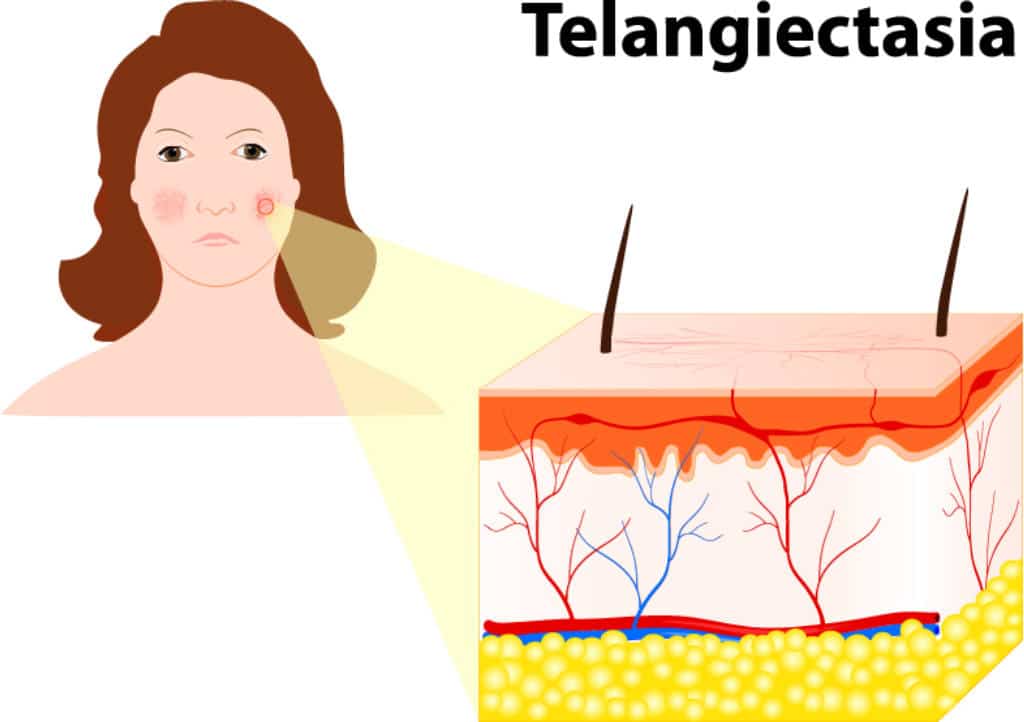Veinwave™ in Knoxville, TN
At Tennessee Vein Center, we are proud to be the first provider in the area to offer Veinwave™ treatments.
This technology eliminates the appearance of spider veins on the face and other sensitive areas of the body.
If you or a loved one are hoping to reduce the appearance of tiny, superficial veins, we are here to help with state-of-the-art non-invasive treatments, including Veinwave™.
Continue reading to learn more.

What is Veinwave™?
Veinwave™ is a non-invasive vein procedure used to treat spider veins and small, superficial varicose veins. It utilizes a specialized device to deliver controlled, high-frequency radio waves directly into the affected veins.
This is considered safe and effective for treating spider and small varicose veins, especially in delicate areas such as the face and ankles.
During Veinwave™ treatment, a fine needle-like electrode is inserted into the targeted spider veins. The radiofrequency energy is then applied through the electrode, causing the vein walls to collapse and seal shut. — a process known as thermocoagulation. Once a spider vein has been successfully treated, it cannot return. However, it is possible to develop more spider veins over time, which may require future treatment to address your vein condition.
This treatment may not be suitable for larger or more complex varicose veins. A thorough evaluation of your unique venous condition is necessary to determine the most appropriate treatment plan for your health and wellness goals.
Does Veinwave™ Treatment Help for Spider Veins?
Yes, Veinwave™ is a revolutionary technique physicians use to eliminate spider and delicate thread veins, known as telangiectasias.
In fact, most healthcare professionals consider the treatment of choice for spider veins that are too small to treat with injection sclerotherapy.
This treatment option is also particularly effective for treating facial telangiectasias.
Does Veinwave™ Work on Rosacea?
Although this treatment has been widely used outside the USA for rosacea, it has yet to be cleared by the FDA for rosacea treatment here.
The European physicians find the Veinwave™ successful at removing the symptoms of rosacea (removing the vascular areas) but not curing the disease.
The number of treatment sessions depends on the severity of the disease state.
Does Veinwave™ Hurt?
In most cases, no, Veinwave™ doesn’t hurt.
The tiny probe used for the treatment is small, touching only 0.002 to 0.003 inches, and is micro-insulated to protect the surrounding tissue.
Some patients report mild discomfort, but it is tolerable – especially compared to electrolysis, laser, or intense pulsed light treatments.
Using any anesthetic needed for the Veinwave™ procedures is not necessary during treatment. Anesthetics are not advised because they can cause undesired vasodilation (widening of the vessels).
In rare cases, a topical anesthetic may be applied to more sensitive areas, such as around the nose.
What Should I Expect After a Veinwave™Procedure?
One of the main advantages of Veinwave™ is its minimal discomfort and quick recovery time.
Veinwave™ treatment is generally well-tolerated, and patients can resume their normal activities immediately following their procedure. The effect of the treatment is instant in that the veins begin to disappear immediately.
Some patients leave treatment without any visible sign on the skin other than the lack of veins, and some with more sensitive skin may suffer minor reddening, which should disappear within a few hours to a few days.
While you may resume normal activities, avoid the sun for a couple of days or use sunblock.
A few days after treatment, tiny micro-crust-like marks may appear where this treatment has been applied. This is normal, and no special care is needed. These will disappear on their own.
Wearing any compression garments is unnecessary as Veinwave™ does not cause enough injury to require a bandage.
It is best to refrain from re-treating an area for six weeks. At that time, your practitioner is best able to see if any small veins remain.
Once a spider vein has been successfully treated, it cannot return. It is possible to develop more spider veins over time that may require future treatment.
Your Answer to Veinwave™ Treatment Near Me
At Tennessee Vein Center, our dedicated team will collaborate with you to create a personalized treatment plan that prioritizes your health and helps you reclaim the lifestyle you deserve– without spider veins.
Discover the effectiveness of Veinwave™ and other cutting-edge treatments available in Knoxville by scheduling your appointment with us today.
Take the first step towards healthier veins and improved well-being. Call (865) 233-5858 now.
Veinwave™ Before and After Gallery
If you’re living with spider veins and considering Veinwave™ treatment, we believe in providing you with a full-picture view of what this procedure could do for you. Explore our before and after patient gallery before exceptional results.